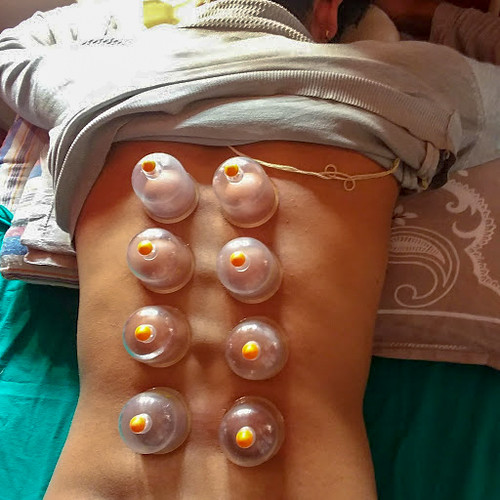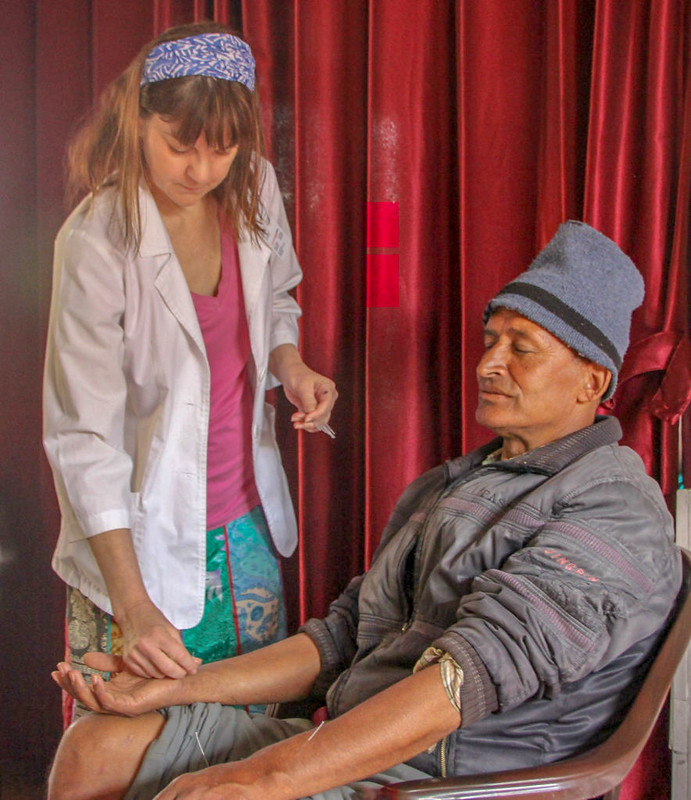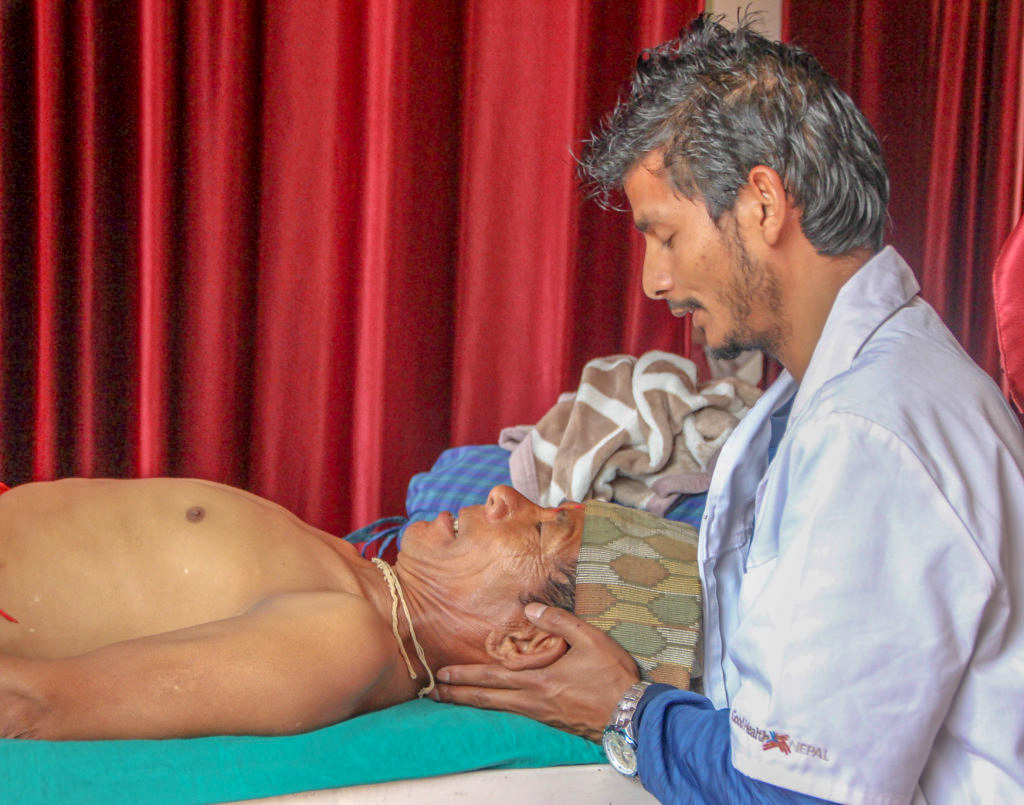Nepal’s rural Acupuncture Relief Project follows a clinic model, where Acupuncture Physicians act as primary care practitioners. They utilize kits with the medical tools to make these primary care assessments. Most patients are not under a doctor’s care. Therefore, as Nepal’s ARP acupuncture volunteer, I refer for medical needs, beyond acupuncture and herbal medicine.
For new patients or ones that display red flags the Acupuncturist assesses blood pressure, glucose levels, vitals, ears, nose or throat, and performs orthopedic exams. We interface western protocols, with the East Asian Medicine’s tongue, pulse and pattern diagnosis, for comprehensive analysis & charting.
ARP Clinic is similar to Community Acupuncture in U.S.
The ARP clinic is like a community acupuncture clinic in the U.S. with primary care services. Each Acupuncture Physician is set up to treat 4 patients at once with 3 chairs and a bed, at capacity for 25 treatments/day. It is cost-effective to treat many people at once as each patient rests with the needles for 20-30 minutes. This empowered me to strengthen both my acupuncture and primary care skills to be a more well-rounded practitioner.
There’s a western medical Healthpost next door to ARP. keep in mind third world standards) providing basic, free healthcare. I took many patients to the Healthpost, for example, a man with an abscessed tooth for antibiotics, a woman with an infected, dirty wound, a man with a broken finger for splints, a woman with dangerously low oxygen levels for COPD medicine, and many more.
Most healthcare in Nepal is not free. For example, an MRI costs about $100, keeping in mind this translates to approximately $10,000 for their currency. As a healthcare practitioner, one needs to keep this in mind to be realistic. We don’t want to make over the top referrals, that will wipe out the entire family funds. A lab opened next to the Healthpost, during our last week. It provides free lab work and tests for serious conditions like HIV, malaria and TB.
As Nepal’s ARP Acupuncture Volunteer with less red tape
In Nepal, there is much less medical red tape with no HIPAA, insurance companies or socialized medicine. Most Nepalese “subsistence farmers” cannot afford the costs of healthcare. Many families will just let their elders die, as there is no hospice or palliative care available. One of my patients with COPD and osteoporosis, who walks 1 hour to my clinic for Acupuncture, told me something sad. She asked her son to throw her in the river, as she is suffering so much. It was heart- wrenching to hear this, but what can I do but offer some relief with Acupuncture. This is why ARP’s free acupuncture is so valuable here, because many of these people have no other health care or means to get it.
As a primary care facility, ARP is the place from which many patients’ medical histories are archived. So future treatments are most beneficial. With some patients, clarifying their medical background can feel like putting together the pieces of a puzzle.
Medical Reports Archived for Follow-up Healthcare
For example, one of my young female adult came in with a malformed, swollen heel. I immediately knew this deformation is beyond an Achilles tendon issue. My first thought was Juvenile RA and queried her if any sickness in the past had started this heel pain. She said that 2 years ago she couldn’t walk and was hospitalized in Kathmandu. Doctors told her she had a heart condition. At that point I realize this could be from Rheumatic Fever. I told her to bring all of her reports from the hospital stay. Later, she brought these reports and my thoughts were confirmed. She did have Rheumatic Fever due to untreated strep throat. Now, going forward, our clinic can treat and advise her more effectively, because the relevant reports are in her charts.
Overall…
Acupuncture Physicians are in a good position to offer comprehensive primary care medicine for their patients, because they can frequently see them. Most conditions (especially chronic) require a series of treatments, for example, with chronic back pain, I may suggest the patient comes in for 2-3 treatments/week for 1 month. This allows the Acupuncture Physician time to better understand their patient’s health, so that treatment plans can be personally adapted for the needs of each unique patient.
Read more on Acupuncture Relief Project!
American Acupuncturist Meets Nepali Patients, Part 1: Medical Interpreters & Hindu Customs
Volunteer Opportunities for Healthcare Practitioners with Acupuncture Relief Project in Nepal
American Acupuncturist Meets Nepali Patients, Part 3: Common Health Problems in Nepal





